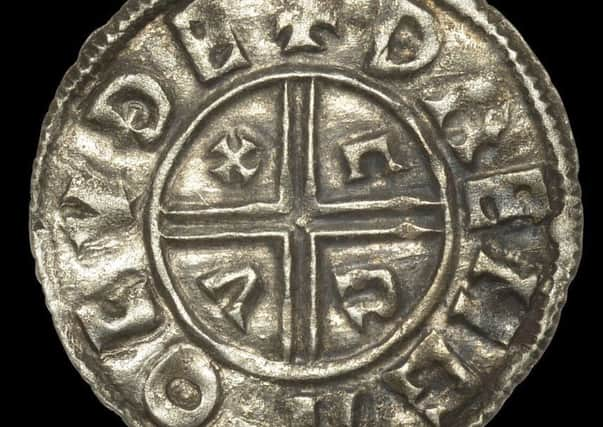Rare coins prove existence of Louth Mint - and sell for over £90,000


The remarkable discovery first came to light when amateur metal detectorist Don Crawley came across the hoard of 99 Anglo-Saxon silver pennies and half pennies in a field in Suffolk back in March 2017.
Mr Crawley explained: “It was my first visit to this farmer’s land in Suffolk.
Advertisement
Advertisement
“After walking up an incline in the field, my Deus detector gave off a strong signal and within a short space of time I had recovered 93 coins. The Finds Liaison Officer was called in and they investigated the site which turned out to be a long forgotten Saxon church.


“Excavating around they uncovered the remains of human bones and I found another six coins.”
The coins were taken to the British Museum where experts examined the coins and declared they were pennies from the reign of Aethelred II, who reigned in England from AD 978-1016.
Aethelred is renowned in history as the “unready” because of the weakness of his government. Viking raids of increasing magnitude forced the King to pay tribute as Danegeld to try to stop them attacking, but to no avail.
Advertisement
Advertisement
The hoard remained at the British Museum until they were disclaimed in August 2019.
It is believed that the hoard may have been buried in AD 999, by a pilgrim who was making penitence, due to worries about the impending apocalypse of the Millennium.
Among the collection were coins from two rare mints: the first was Melton Mowbray, and the second was a previously undiscovered mint which has since been confirmed by experts as being based in Louth.
Louth had been a ‘burh’, or fortified settlement, in the 10th century with a church containing the remains of St Herefrith.
Advertisement
Advertisement
Antiquities specialist Nigel Mills, from Dix Noonan Webb valuers and auctioneers,said: “The coin reads ‘Dreng mo Lude’ which translates as Dreng moneyer in Louth, Lincolnshire.”
He added: “At this time over 86 mints were operating around the country with up to 100 different moneyers at the larger mints like London.”
Dix Noonan Webb auctioned the coins in Mayfair, London, on December 4-5, with a provisional estimate of £30,000-£50,000 in total.
However, the hoard ended up being sold for a total sum of more than £90,000 - more than three times its low estimate.
Advertisement
Advertisement
The coins from Louth, which had both been estimated to fetch £4,00-5,000, ended up selling for £10,540 to an English collector and £6,820 to an international dealer respectively- a total of £17,360.
Meanwhile, campaigners supporting the protection of Julian Bower as a historically-significant site have been buoyed by the news regarding the Louth mint, as another word for ‘burh’ - the fortified settlement where mints had to be based - is ‘bower’.
A spokesperson for the campaign group said: “(Our research) has always maintained that Julian Bower is the ancient burh of Louth.
“Julian Bower has huge banks; nowhere else in Louth does. The conclusion is that this was the most likely place for the location of the mint.”